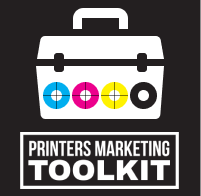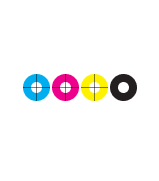Understanding who your customers are is a fundamental aspect of running a successful business. This process, known as target market analysis, helps businesses tailor their products, services, and marketing efforts to meet the specific needs of their most likely customers. For a printing company, identifying and understanding the target market is crucial to ensure that marketing strategies are effective and resources are efficiently utilized.
Importance of Identifying the Target Market for a Printing Company:
Identifying the target market is crucial for any business, especially for a printing company. Understanding your ideal customers allows you to tailor services, marketing, and strategies to their specific needs, improving efficiency, customer satisfaction, and business growth. Here are five key reasons why it’s essential:
- Efficient Resource Allocation:By focusing on the most likely customers, a printing company can allocate its resources more effectively, ensuring that marketing efforts are not wasted on unlikely prospects.
- Tailored Marketing Strategies: Understanding the target market allows for the creation of marketing strategies that speak directly to the needs and preferences of potential customers, increasing the likelihood of conversion.
- Competitive Advantage: A deep understanding of the target market can provide insights that differentiate a printing company from its competitors, making it more attractive to potential customers.
Different Types of Target Markets for a Printing Company:
Printing companies can cater to various target markets, each with distinct needs and characteristics. Some common target markets include:
- Small and Medium-sized Businesses (SMBs): These businesses often require printing services for marketing materials, business cards, brochures, and other promotional items.
- Educational Institutions: Schools, colleges, and universities need printing services for flyers, booklets, posters, and academic materials.
- Non-Profit Organizations: These organizations frequently use printed materials for fundraising campaigns, event promotions, and informational brochures.
- Corporate Clients: Large corporations require high-volume printing services for internal communications, promotional materials, and official documents.
- Individuals and Consumers: Personal printing needs such as invitations, personalized gifts, and photo books.
Conducting Market Research to Identify the Target Market:
Identifying the target market for a printing company requires a deep understanding of who your potential customers are and what they need. Conducting thorough market research is essential to gather the necessary data to make informed decisions.
Here are five key steps to guide you through the process:
1. Surveys and Questionnaires
2. Industry Reports
3. Customer Feedback
4. Competitor Analysis
5. Data Analysis Tools
1. Surveys and Questionnaires
Surveys and questionnaires are powerful tools to directly gather information from potential customers. They allow you to ask specific questions about their printing needs, preferences, and purchasing behavior.
Designing Effective Surveys: Craft questions that provide insights into customer demographics, print volume needs, preferred printing services, and budget constraints.
Distribution Channels: Use online platforms, email lists, social media, and in-person interactions to reach a broad audience.
2. Industry Reports
Analyzing industry reports helps you understand broader market trends, customer demands, and competitive landscapes. These reports often include valuable data on market size, growth projections, and emerging technologies.
Sources: Utilize reports from market research firms, industry associations, and trade publications.
Application: Identify market opportunities, potential customer segments, and areas for innovation.
3. Customer Feedback
Gathering feedback from your existing customers provides firsthand insights into their satisfaction and expectations. This can reveal areas for improvement and opportunities for new services.
Methods: Use follow-up emails, customer service interactions, and feedback forms.
Focus Areas: Understand what customers value most about your services and where they see room for enhancement.
4. Competitor Analysis
Studying your competitors helps you identify their strengths and weaknesses, as well as potential gaps in the market that you can exploit.
Elements to Analyze: Look at their product offerings, pricing strategies, customer base, and marketing tactics.
Benchmarking: Compare their performance metrics with your own to identify areas for improvement.
5. Data Analysis Tools
Utilize data analysis tools to process and interpret the data collected from various sources. This helps in identifying patterns, trends, and actionable insights.
Tools: Employ software such as Excel, SPSS, or more advanced analytics platforms like Tableau or Google Analytics.
Outcomes: Develop detailed customer personas, segment your market, and tailor your marketing strategies accordingly.
By following these steps, a printing company can effectively identify and understand its target market, ensuring that its marketing efforts are both strategic and impactful.
Demographic Characteristics of the Target Market for a Printing Company:
Understanding the demographic characteristics of the target market is essential for a printing company to tailor its services and marketing efforts effectively. These characteristics help segment the market based on measurable criteria, allowing businesses to identify and prioritize their most valuable customers. Here are five key demographic factors to consider:
1. Business Size
Description: This refers to the scale of the business, typically classified as small, medium, or large enterprises.
Importance: Small and medium-sized businesses (SMBs) often require smaller, more frequent print runs for marketing materials, while large corporations may need high-volume printing services for internal and external communications.
Targeting Strategy: A printing company can develop specialized packages for SMBs focusing on cost-effectiveness and rapid turnaround, and comprehensive service solutions for larger corporations, emphasizing capacity and reliability.
2. Industry
Description: The specific sector or field in which the business operates, such as education, healthcare, retail, or non-profit organizations.
Importance: Different industries have unique printing needs; for example, educational institutions need a variety of printed materials like textbooks, flyers, and posters, whereas retail businesses might require promotional materials, packaging, and signage.
Targeting Strategy: By understanding the distinct requirements of each industry, a printing company can offer tailored services and products that meet those specific needs, thus enhancing customer satisfaction and loyalty.
3. Geographical Location
Description: The physical location of potential customers, including local, regional, national, or international markets.
Importance: Local businesses may prefer nearby printing services for convenience and quicker delivery times, while larger corporations might look for companies that can handle national or international orders.
Targeting Strategy: A printing company can focus on local SEO to attract nearby clients and invest in logistics and distribution channels to serve broader markets efficiently.
By analyzing these demographic characteristics, a printing company can strategically position itself to meet the diverse needs of its target market, thereby driving growth and enhancing customer satisfaction.
Also Read : How to promote printing business online?
Psychographic Characteristics of the Target Market for a Printing Company:
Understanding the psychographic characteristics of your target market involves delving into the attitudes, values, lifestyles, and behaviors that influence their purchasing decisions. For a printing company, these insights are crucial for tailoring services and marketing strategies that resonate on a deeper level with potential clients. Here are five key psychographic characteristics to consider:
1. Value for Quality:
Customers who prioritize high-quality prints are often willing to pay a premium for superior service. These clients expect excellent print resolution, vibrant colors, and durable materials. They likely appreciate attention to detail and may have a keen eye for design and aesthetics. Emphasizing your company’s commitment to quality and showcasing examples of your best work can attract these quality-conscious clients.
2. Environmental Concerns:
With growing awareness about environmental issues, many customers now seek eco-friendly printing options. These environmentally conscious clients prefer printing companies that use sustainable materials, recycle waste, and implement green printing practices. Highlighting your company’s commitment to sustainability, such as using recycled paper and eco-friendly inks, can appeal to this segment of the market.
3. Innovation and Creativity:
Some clients are drawn to innovative and creative printing solutions. These customers often look for unique, customized products that help them stand out. They value originality and may be interested in special finishes, bespoke designs, or cutting-edge printing technologies. Offering a range of creative services, such as custom design assistance and innovative print techniques, can capture the interest of this market.
4. Budget-Consciousness:
While some clients are willing to invest in high-quality prints, others prioritize cost-effectiveness. Budget-conscious customers are looking for affordable printing solutions without compromising too much on quality. They may appreciate value-added services like bulk discounts or package deals. Offering competitive pricing and flexible payment options can attract and retain these clients.
5. Reliability and Timeliness:
Many customers need printing services that are not only high-quality but also reliable and timely. These clients value prompt delivery and consistent performance. They might have tight deadlines or recurring printing needs and thus prefer a printing company known for its dependability. Emphasizing your company’s track record for on-time delivery and consistent service can build trust and loyalty among this market segment.
By understanding these psychographic characteristics, a printing company can better tailor its services, communication, and marketing strategies to meet the specific needs and preferences of its target customers. This approach not only enhances customer satisfaction but also fosters long-term relationships and drives business growth.
How to Reach the Target Market for a Printing Company?
Reaching the target market is a pivotal aspect of any printing company’s success. Here’s a detailed breakdown of effective strategies to connect with your audience:
1.Develop a Professional Website:
Create a visually appealing and user-friendly website that highlights your printing services, portfolio, and contact information. Your website should effectively communicate your brand identity and showcase your expertise in printing.
2.Optimize for Search Engines (SEO):
Implement on-page and off-page SEO techniques to improve your website’s visibility on search engine results pages (SERPs). This includes keyword research, optimizing meta tags, creating high-quality content, and earning backlinks from reputable sources.
3.Engage on Social Media:
Establish a presence on social media platforms such as Facebook, Instagram, Twitter, and LinkedIn. Share engaging content, interact with your audience, and participate in relevant conversations to build brand awareness and foster relationships with potential customers.
4.Invest in Pay-Per-Click (PPC) Advertising:
Launch targeted PPC campaigns on platforms like Google Ads and social media channels to reach potential customers actively searching for printing services. Use keywords relevant to your business and create compelling ad copy to drive clicks and conversions.
5.Create Valuable Content:
Develop informative and visually appealing content such as blog posts, infographics, and video tutorials related to printing. By providing valuable insights and solutions to common printing challenges, you can establish your company as an industry authority and attract inbound traffic.
6.Offer Special Promotions:
Attract new customers and incentivize repeat business by offering special promotions and discounts on printing services. Consider running limited-time offers, referral programs, or bundle deals to encourage conversions and increase customer loyalty.
7.Network with Local Businesses:
Build relationships with local businesses, networking groups, and chambers of commerce to expand your reach within the community. Attend networking events, sponsor local events, and offer exclusive discounts to fellow businesses to generate referrals and partnerships.
8.Utilize Email Marketing:
Build an email list of prospects and existing customers and send out targeted email campaigns to promote your printing services, share company updates, and offer exclusive deals. Personalize your emails and segment your audience to increase engagement and conversions.
9.Optimize for Mobile Devices:
Ensure that your website and digital content are optimized for mobile devices to provide a seamless browsing experience for users on smartphones and tablets. Mobile optimization is crucial for reaching customers who prefer to access information on the go.
10.Collect and Act on Customer Feedback:
Encourage customers to provide feedback on their experience with your printing company through surveys, reviews, and testimonials. Use this feedback to identify areas for improvement, address customer concerns, and refine your marketing strategies to better meet the needs of your target market.
Conclusion:
Identifying and understanding the target market is crucial for the success of a printing company. By conducting thorough market research, analyzing demographic and psychographic characteristics, and tailoring marketing strategies accordingly, printing companies can effectively reach and engage their most likely customers. At Printers Marketing Toolkit, we are dedicated to helping printing businesses develop and implement effective marketing plans to achieve their goals.
For more information on how to create a successful marketing strategy for your printing company, contact us at info@printersmarketingtoolkit.com or call (208) 274-7282.




